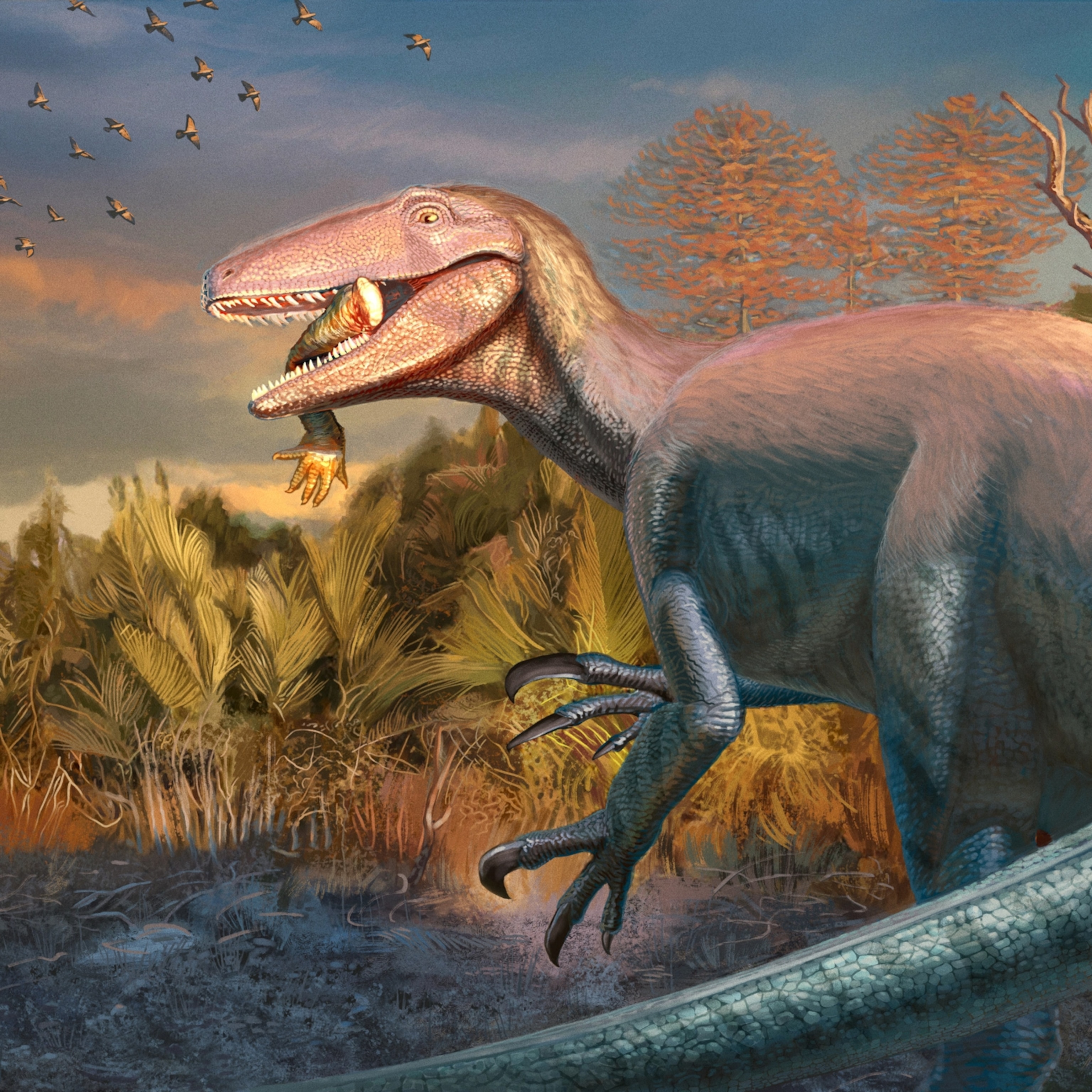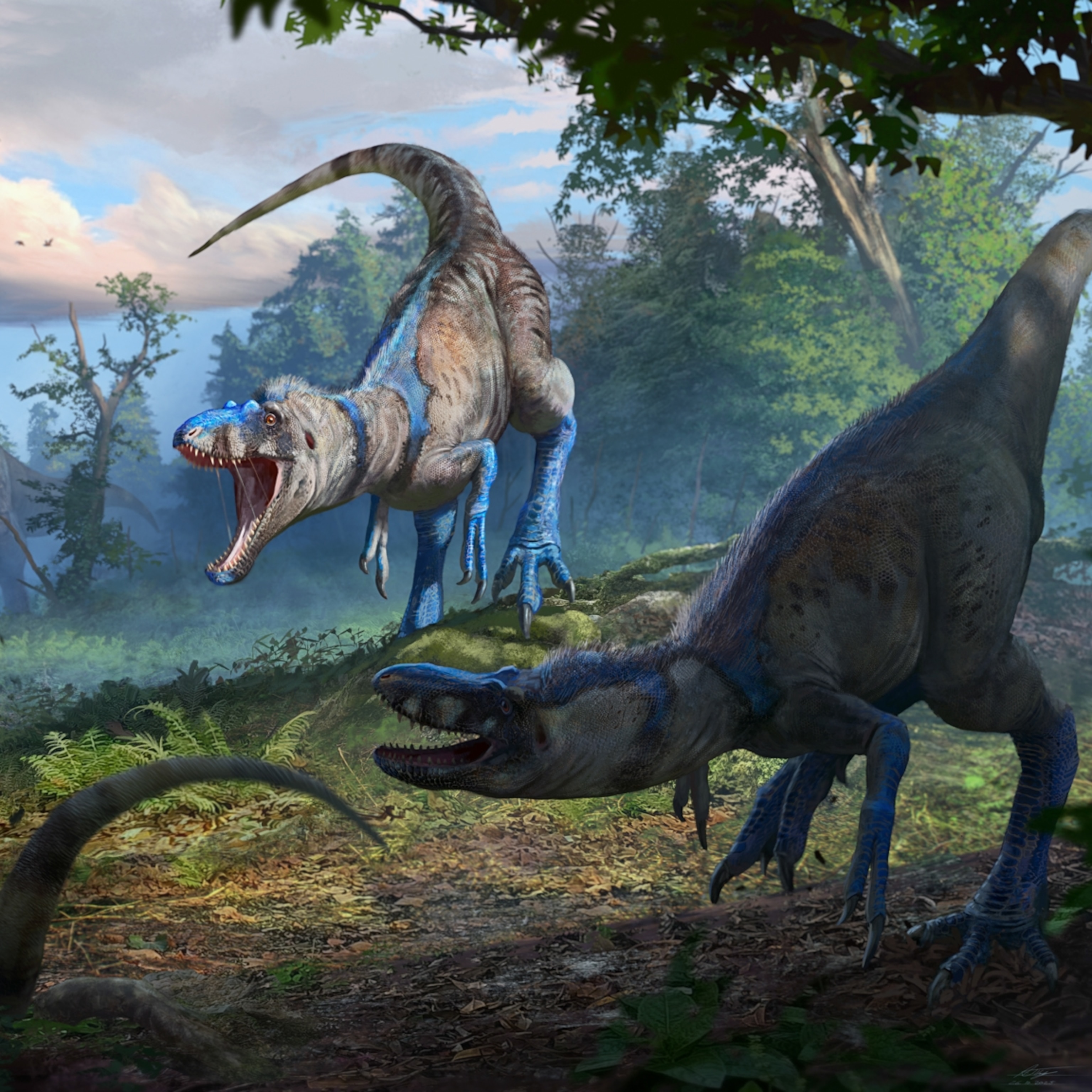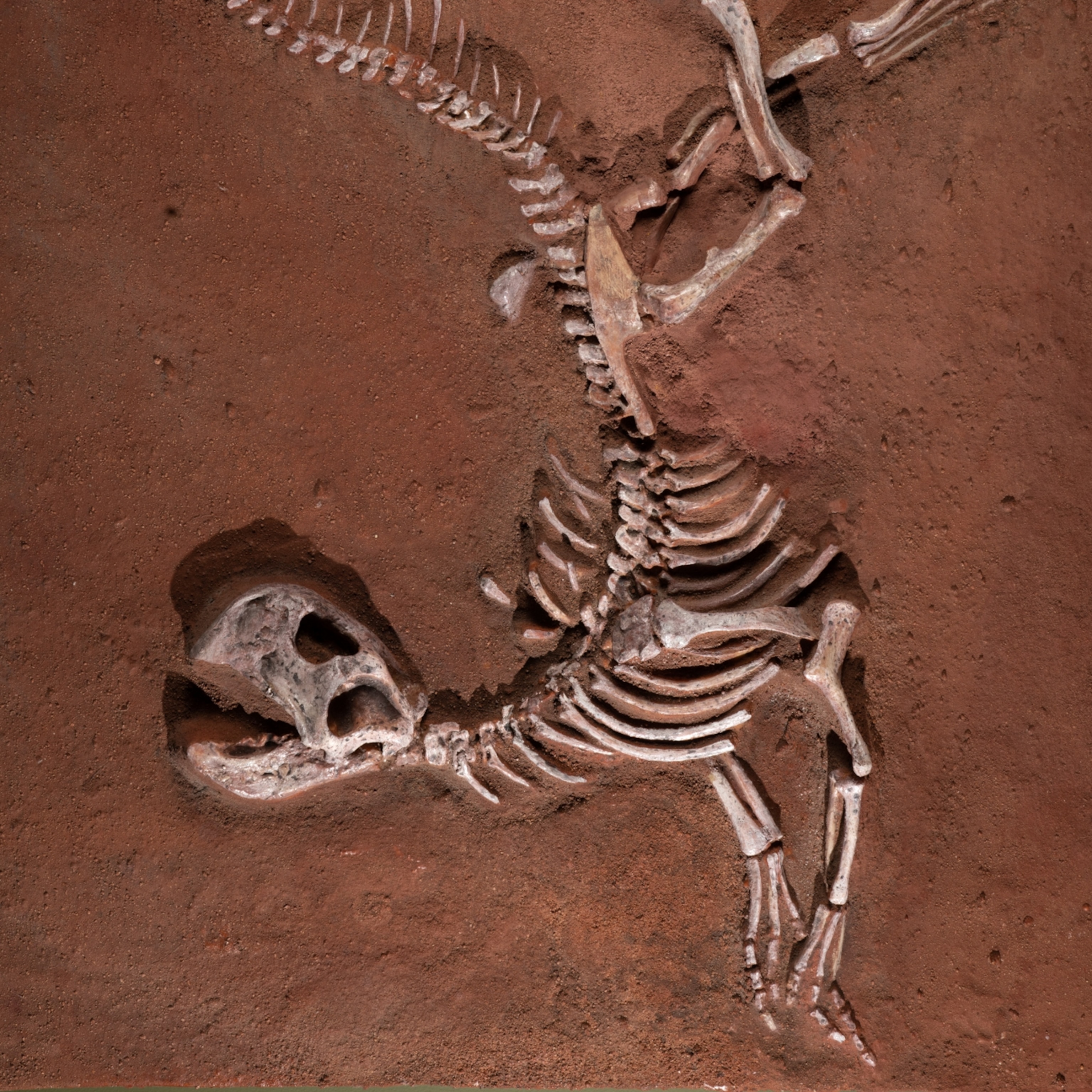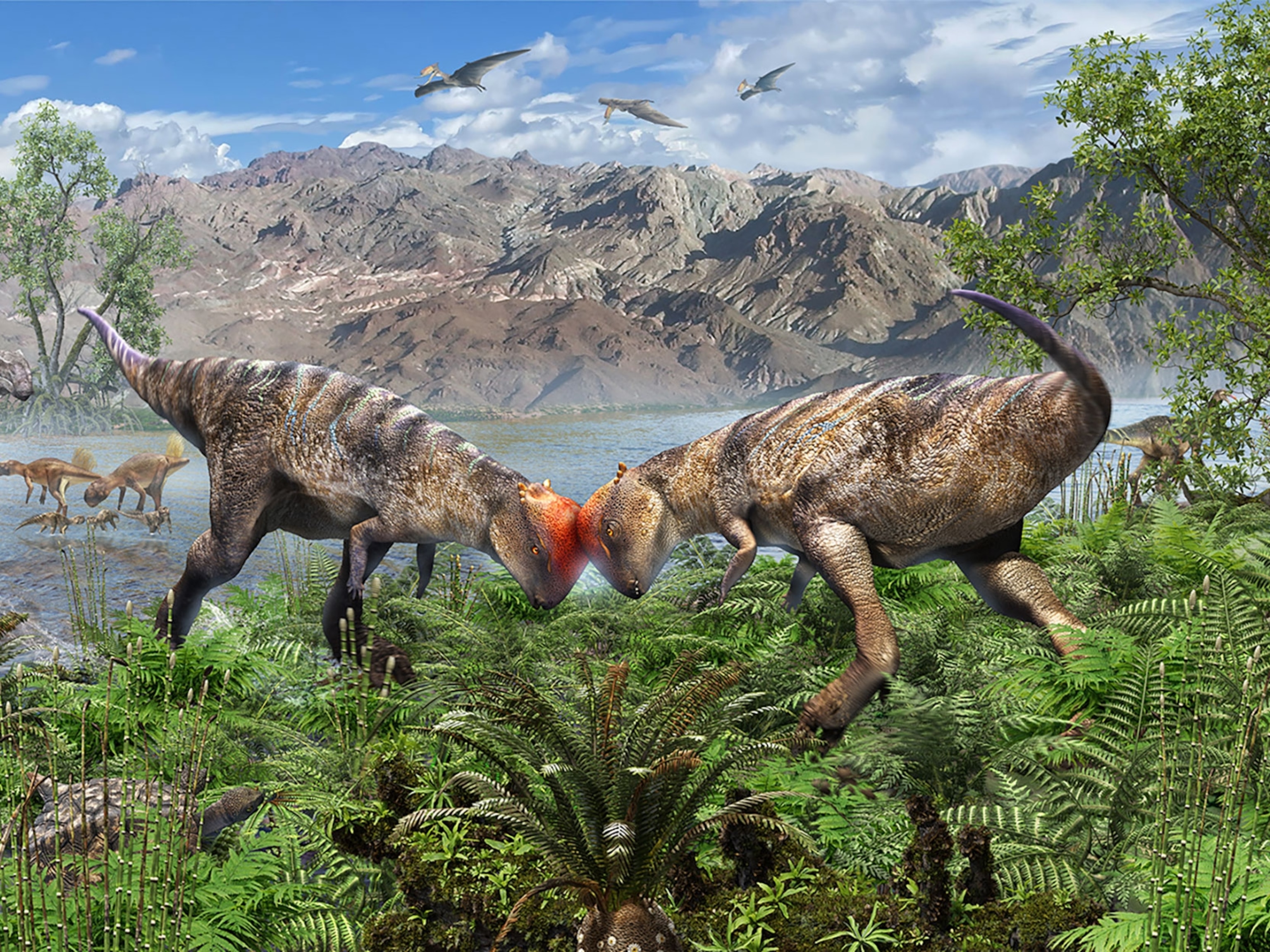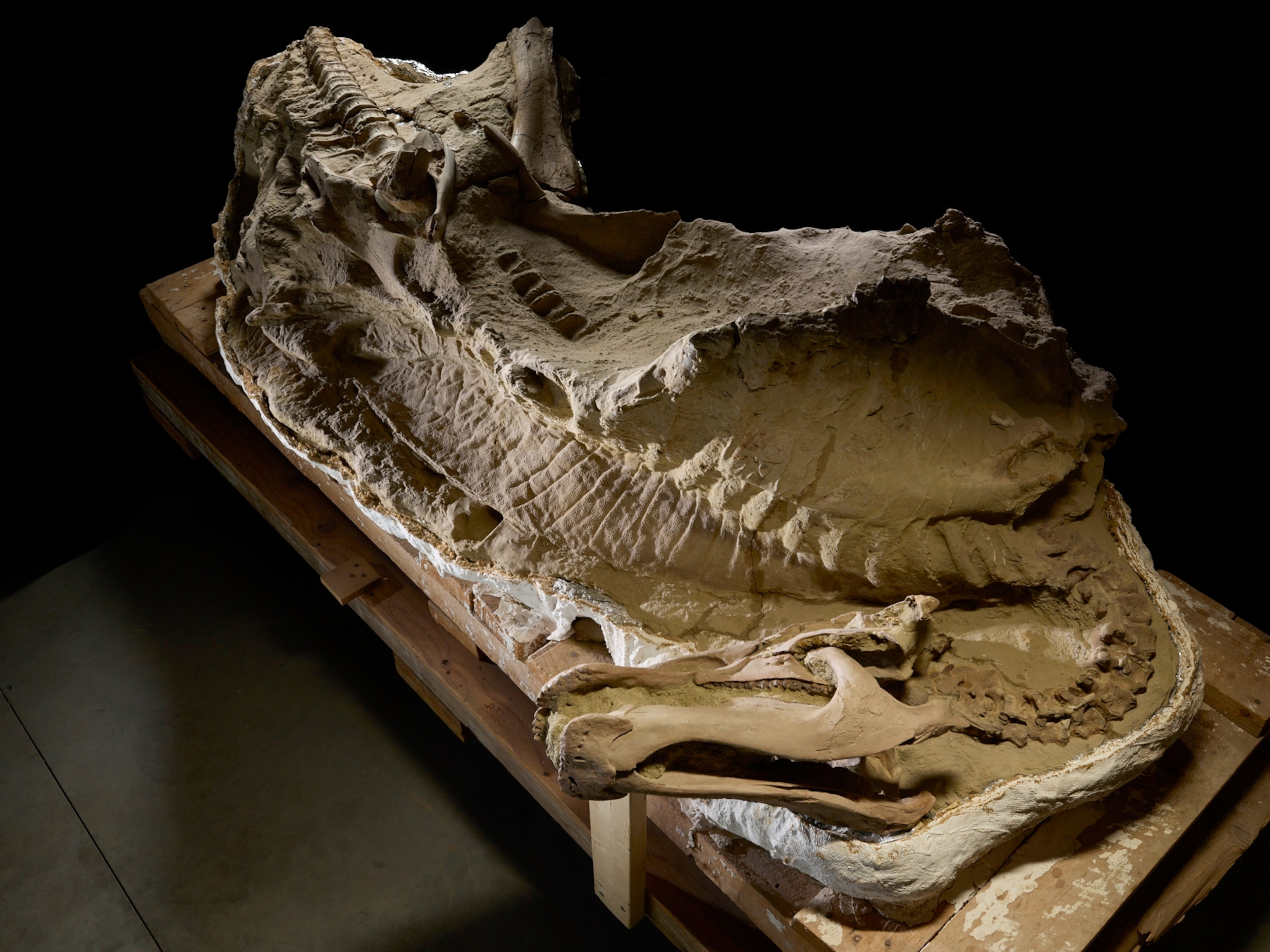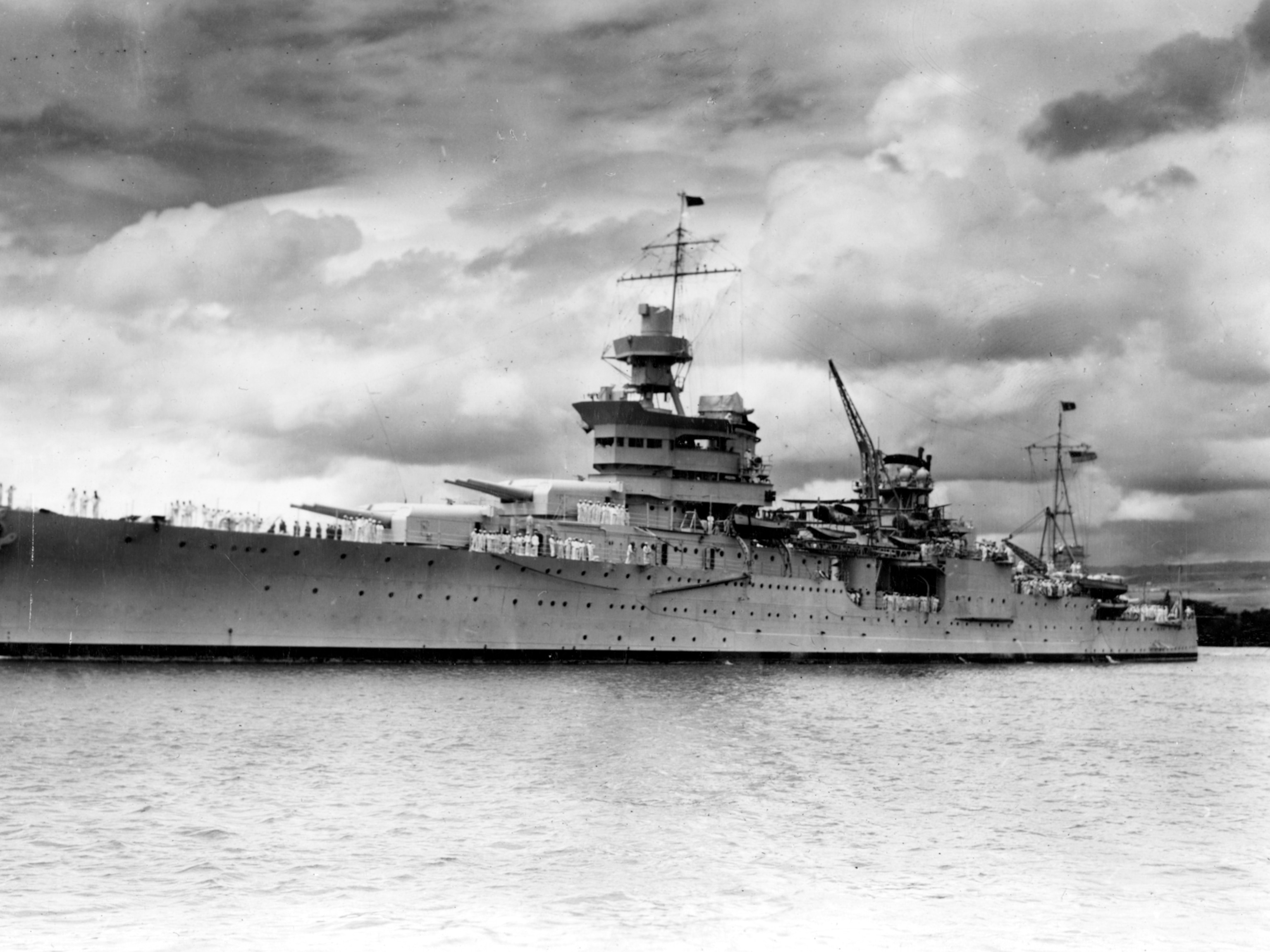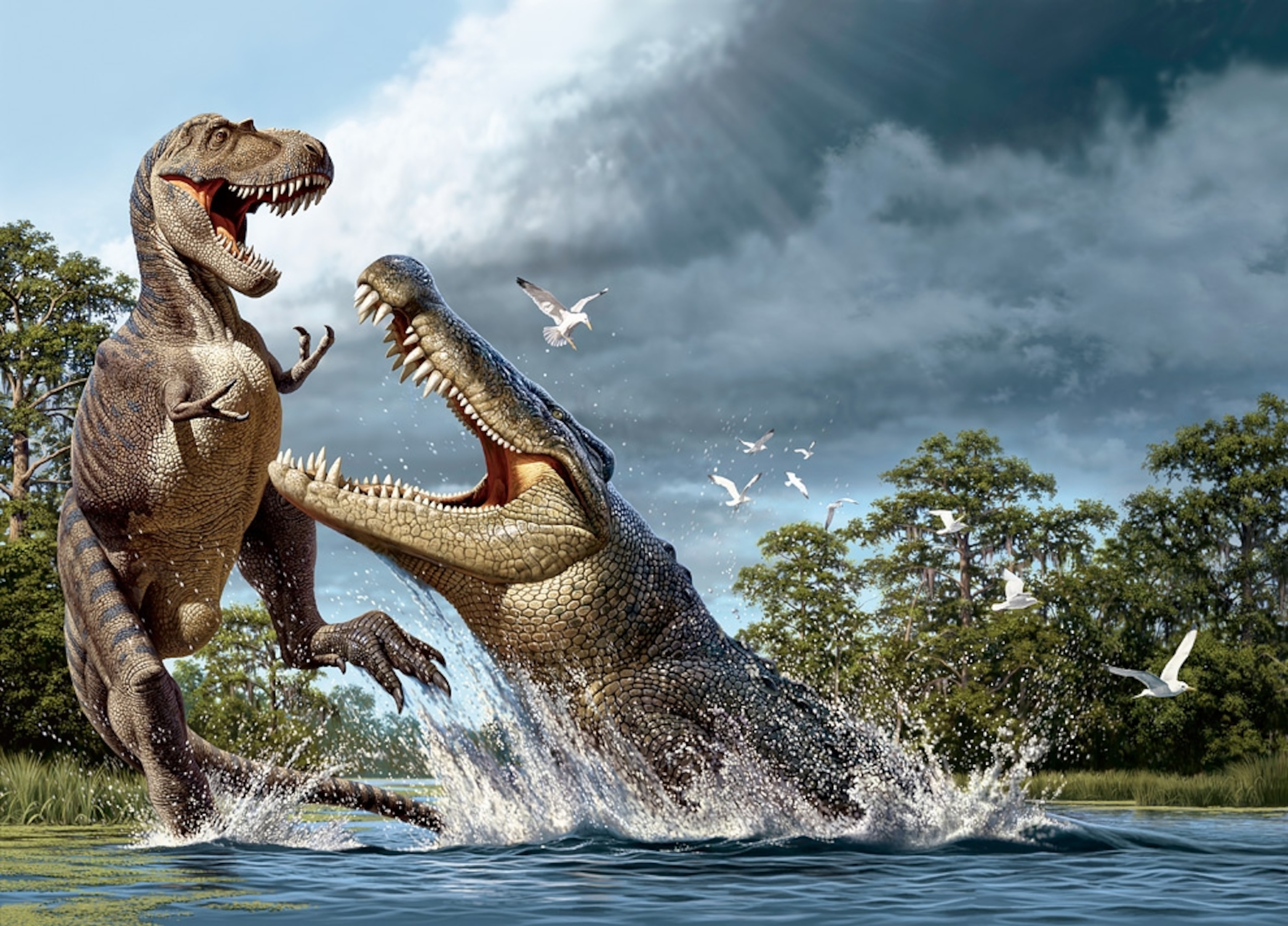
Feces, Bite Marks Flesh Out Giant Dino-Eating Crocs
Rock-hard feces and oddly bitten bones are helping to flesh out a 29-foot, dinosaur-eating croc.
Rock-hard feces and oddly bitten bones are helping to flesh out one of the biggest crocs of prehistory, researchers say.
As long as a stretch limo, Deinosuchus—"terrible crocodile"—likely prowled shallow waters and hunted dinosaurs its own size, the evidence suggests.
Last week paleontologists announced their conclusions after analyzing pieces of 79-million-year-old fossilized dung, or coprolites, that appear to be the first known droppings from Deinosuchus. The discoveries offer the newest insights into the lives of the giant crocs, which roamed much of what is now the United States and northern Mexico.
Sand and shell fragments in the droppings, found within the last few years near a Georgia stream, suggest the croc preferred estuaries, where, at least in the Georgia—home to a great concentration of Deinosuchus remains—it probably dined mostly on sea turtles, researchers say.
Despite the Georgia Deinosuchus's relatively docile prey, "we're pretty sure it was the apex predator in this region," said Samantha Harrell, an undergraduate at Columbus State University in Georgia, who presented her research March 17 at a Geological Society of America meeting in Baltimore.
The team also found a fossilized shark tooth embedded in the outside of a coprolite. But because the tooth bears no signs of having been digested, the team suspects a shark left the tooth behind when scavenging on Deinosuchus droppings.
(Related: "Fossil Feces Is Earliest Evidence of North American Humans.")
What the researchers didn't find in the feces are bone or other bits of undigested animals.
"That's actually good," Harrell said, "because both modern and ancient crocs have digestive juices that eat up bone, horns, teeth, and just about everything else"—so the "empty" dung supports the idea that the feces are from a croc.
(Related: "Five 'Oddball' Crocs Discovered, Including Dinosaur-Eater.")
Crocs vs. Dinosaurs
Outside Georgia, Deinosuchus apparently took on slightly more challenging prey, according to older bite-mark evidence, which Columbus State paleontologist David R. Schwimmer presented alongside Harrell at the meeting.
Deinosuchus tooth impressions in the bones of their prey tell the tale of titanic battles in which the 29-foot-long (9-meter-long) crocs took down dinosaurs their own size—including the T. rex relatives Appalachiosaurus montgomeriensis and Albertosaurus (see picture above).
"One of the marks shows signs that the bone was healed, which means that the animal survived the bite," Schwimmer said.
"That proves that at least this one specimen was obviously [indicative of] predation and not scavenging."
Schwimmer first noticed strange, dimpled, egg-shaped indentations in Georgia sea turtle fossils. Later he saw similar marks in dinosaur bones in Big Bend National Park in Texas and in the New Jersey State Museum.
"I realized these bites were from something with really powerful jaws and lots of teeth," he said. "And it was pretty obvious that this big, blunt-toothed croc was the source.
"There was nothing else I've found that could create blunt bite marks like these."
(See pictures of prehistoric crocs, including a dinosaur eater, a galloper, and more.)
Uncouth Eater
Tooth marks, though, can show us only part of the picture, said Stephanie Drumheller, an expert on ancient crocodile bites.
"Modern crocodilians"—crocodiles, alligators, and related extinct forms—"are more than capable of swallowing smaller prey whole and disarticulating larger animals into bite-sized pieces," leaving little evidence behind, said Drumheller, a Ph.D. candidate in geoscience at the University of Iowa.
"We can infer that a giant like Deinosuchus would be capable of even more destructive feeding behaviors."
The bite-mark evidence that does exist, though, raises a question: Why would a croc capable of taking down big, meaty dinosaurs waste its energy on turtles? In a word: location.
Modern crocs, which hunt a wide range of prey, eat whatever's available in their areas. The same factor may have determined whether Deinosuchus individuals feasted largely on turtles or dinosaurs or other prey, Drumheller said.
(Also see "World's Biggest Snake Ate New Prehistoric Croc Species.")
Giant Crocs Not Built to Last?
North America-born Deinosuchus also underscores that giant crocs arose at different places and times, said University of Chicago paleontologist Paul Sereno, who discovered 110-million-year-old Sarcosuchus imperator—aka SuperCroc—in Niger.
"In Deinosuchus, and independently in SuperCroc, we have two lineages, one older than the other, that [prove] crocodile bodies grew to a gargantuan size—to dinosaur size," said Sereno, a National Geographic Society explorer-in-residence.
Deinosuchus, which lived just before the close of the Cretaceous period, is more closely related to modern croc lineages than SuperCroc—yet still faded to extinction.
What happened to these prehistoric leviathans?
A fully grown giant male croc likely would have had to commandeer miles of river territory to regularly find enough prey sustain itself, Sereno explained. So space constraints likely kept population numbers low—making the giant crocs vulnerable to extinction in tough times.
"It appears that every once in a while the right conditions arise for giant crocs," Sereno said. "But they usually don't last."

